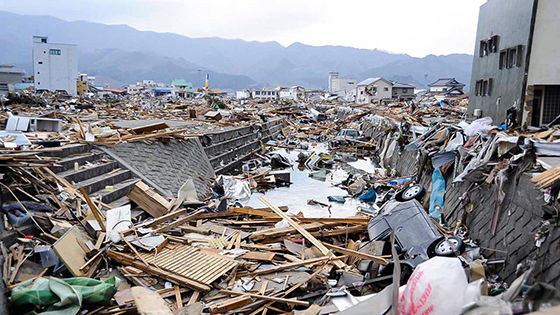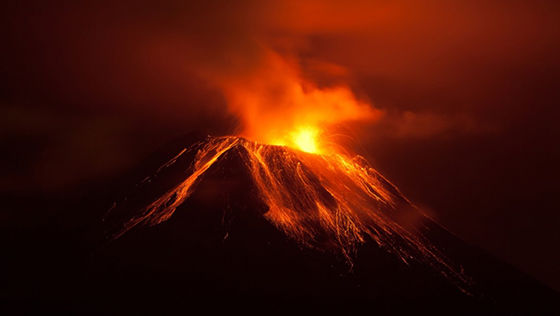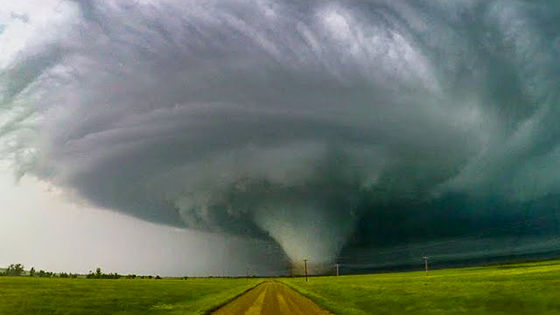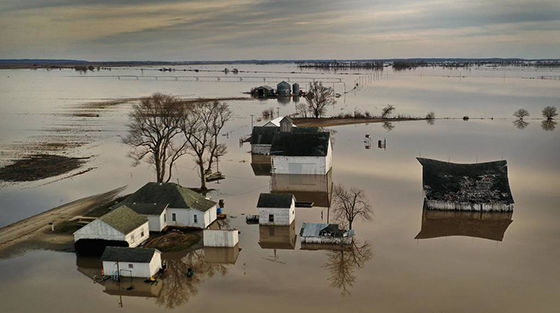We live on volatile planet. Tectonic plates continue to move. Volcanoes unpredictably erupt. Tornadoes touch down in unexpected, and even local, places. 2020 was one of the most active hurricane seasons in history and in September 2021, Hurricane Ida brought an EF2 tornado to Temple University Ambler and the surrounding community. Natural disasters are major adverse events, but they often result from the natural processes of the Earth - the impact of climate change on the ferocity and frequency of natural disasters is being closely studied by researchers all over the globe. Join us as we explore earthquakes, hurricanes, tornadoes, tsunamis, volcanoes, thunderstorms and more!
Separating Natural Disaster Facts from Fiction
Hollywood has a real talent for presenting natural disasters on film. The spectacle is enormous, the devastation complete. It can take your breath away! For students at Temple, it’s also an excellent jumping off point for learning the actual science behind earthquakes, volcanoes, tsunamis and more. The Department of Earth and Environmental Science in Temple’s College of Science and Technology offers the course Disasters: Geology vs. Hollywood (it’s one to Temple’s “Cool Classes” offered through the GenEd program) to any students that want to separate scientific fact from Hollywood fiction. Students learn the fundamentals of plate tectonics, how magmatic composition controls volcanic explosivity, how to calculate earthquake locations from seismic data, and how to prepare a disaster readiness plan for a major U.S. city. Here are just a few reactions from Earth and Environmental Science professors to how earthquakes, volcanic eruptions and meteor strikes have been presented on film.
Geology vs. Hollywood: Earthquakes

The Hoover Dam is about to collapse! Run for your lives! When Hollywood presents natural disasters, they usually go big, really big — special effects spectacles that go well beyond any semblance of reality. Case in point, the recent film San Andreas. How will an actual geophysicist react to the film? Find out with Dr. Jonathan Nyquist, Temple University Director of General Education and the Weeks Chair of Environmental Geology in the Department of Earth and Environmental Science in Temple’s College of Science and Technology. This video is used with permission by Temple’s College of Science and Technology and the Department of Earth and Environmental Science.
Geology vs. Hollywood: Volcanoes

How would a geochemist view how Hollywood presents a volcanic eruption (in a major East Coast city no less)? Find out as Dr. Steven Chemtob, Assistant Professor of Aqueous Geochemistry and Mineralogy in the Department of Earth and Environmental Science in Temple’s College of Science and Technology, risks viewing a clip from Disaster Zone: Volcano in New York (yes, that New York). Hint: If lava is flowing through your house, you’ll know it before you open the door. This video is used with permission by Temple’s College of Science and Technology and the Department of Earth and Environmental Science. (Warning: Adult Language. Parental guidance is advised).
Geology vs. Hollywood: Meteor Impacts

Bet you didn’t know that George A. Romero’s (he of Night of the Living Dead fame) classic 1982 horror anthology Creepshow had anything to with geology. Stephen King begs to differ. In the story Broken Meteor, King has a run in with a meteor that has fallen to earth with less than pleasant results. Dr. Alexandra Davatzes, Associate Professor of Planetary Geology and Precambrian Geology in the Department of Earth and Environmental Science in Temple’s College of Science and Technology, gives a planetary geologist’s view of the reality of impacts versus the science fiction of the film. Will you turn into a green plant person by touching a meteorite? Probably not but why tempt fate? This video is used with permission by Temple’s College of Science and Technology and the Department of Earth and Environmental Science. (Warning: Adult Language. Parental guidance is advised).
Deep Dive Into Disaster

They are some of the most devastating events on earth. Natural Disasters, while naturally occuring processes of the planet, are terrifying and unpredictable with aftermaths that can affect regions and populations years after they strike. Join the Science of Scary as we take a deeper look into several types of natural disasters along with the more commonplace thunderstorms, which can also have dangerous consequences from lightning strikes and torrential rain.
Visit these pages to learn more about:
Are You Ready?

In the event of a hurricane, tornado, volcano eruption, flood, landslide or earthquake, would you know what to do? Would you be ready? Ready.gov, a website of the Federal Emergency Management Agency, is a national public service campaign designed to educate and empower people to prepare for, respond to and mitigate emergencies, including natural and man-made disasters — from avalanches to wildfires. The goal of the campaign is to promote preparedness through public involvement. Build a kit. Make a plan. Be ready!

